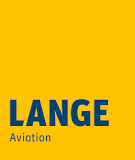“April 24, 1968” comes like a pistol shot when Gerd Spiegelberg is asked about when he started flying. He was 17 when he first sat in a sailplane. Since then, the trained vehicle builder has spent around 7,600 hours in gliders, about ten percent of them in his Antares 18, with which he has been flying for six years. The three-time national team pilot and mountain specialist has already achieved numerous sporting successes over the years: three times each as state champion in Hesse and North Rhine-Westphalia, second at the 1996 German Championship in the standard class, 2000 Barron Hilton Cup, 2010 Grand Prix in St. Moritz, to name but a few. About his Antares 18T he reports as follows:
“I know the LS-10 and the ASG-29, which have very narrow operating limits for their starting procedures: If you’re too fast, the engine can over-rev, if you’re too slow, it won’t start. So you have to plan very far ahead. If you only decide to start the engine at an altitude of 150 meters (490 ft), it’s usually too late. So I told Axel Lange: ‘Install a starter motor! But with a cylinder head temperature display and variable throttle, the undertaking became more complex. So I received my Antares 18T at the end of July 2013.
I remain as enthusiastic about the great flying characteristics, the comfortable cockpit and the perfect control surface tuning, which I already knew from the Antares 18S, as I was when my plane was first delivered. Long flights are therefore possible without fatigue.
In early May, I had a personal milestone – I escaped an outlanding without any problems and flew 70 kilometers home under power: That was nice! I like having the security of knowing that if you push a flight all the way to the evening, you’ll finish it. In the past, there were some thermal situations that one would not and should not use. Today, I can try a lot more, and that also brings greater opportunities in terms of sport. This is clearly a psychological aspect, because the reliable propulsion also means a high level of inner security.
Competitions are decided between the ears. The qualification for the German championship will take place in Stendal in August, and I think I have a very good chance now. And if the competitive successes at German level start to wane, then I’ll be looking forward to soaring safaris with the Antares. There’s not much space on board, but I have a thin sleeping bag and am experimenting with a lightweight refueling system so that I can be self-sufficient at my destination. The 18T is exactly the right aircraft for this as well.” This spring, Gerd has already had more than a dozen great long and fast flights with his Antares 18T, including fast foehn flights of up to 1131 km (610 nm) from Lienz (AT) in April.
